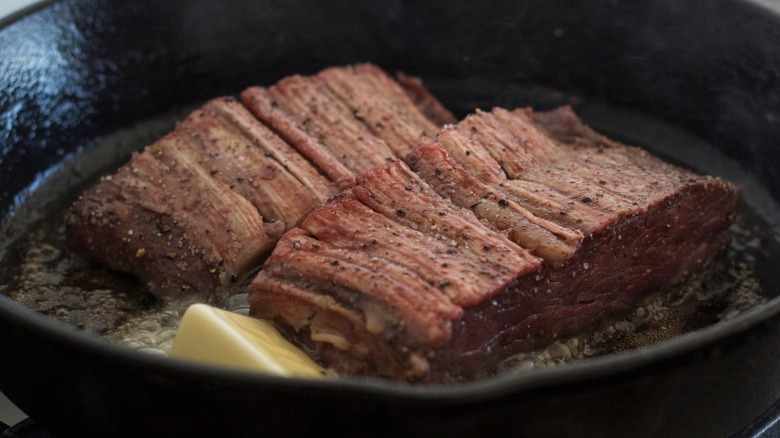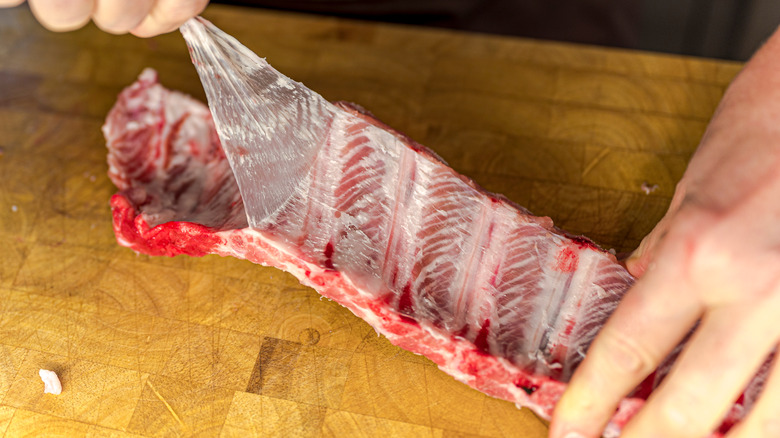The Must-Know Tip That Will Transform Your Ribeye Cap Steaks
Ribeye is arguably the most popular cut of steak. And it's from this sub-primal cut that you get ribeye cap steak, ribeye's most tender part that borders it like a crescent. Although ribeye cap steak is inherently rich when cooked, there's lingering silver skin along its inner border, which means that if you bite into it you may have to wrestle stubborn debris from between your teeth. Luckily, we have a straightforward tip to resolve this.
Simply unwrap your ribeye cap steaks, unroll them, and trim the silver skin. This tip should help you get rid of the tough band that looks like fat but isn't. Most of ribeye cap steak's fat runs throughout the meat as white marbling and melts into the most succulent texture when you cook it. Silver skin, on the other hand, doesn't give in so easily.
It remains firm and chewy, so a typical 10-minute grill session is enough to tenderize the meat but leaves the tough silver skin intact. Although it can be hard to tell if your ribeye cap steak has silver skin because it comes rolled into a spiral, unrolling it is pretty simple and is the best way to address that rubbery band of cartilage. A sharp knife is all you need to remove it — properly leverage it and you'll have a flawless cut of tender ribeye cap steak that's ready to throw on the grill.
Why you shouldn't toss the silver skin
This extra trimming step turns most people away from ribeye cap steak and makes the resulting eye of the rib more expensive. But that silver strip is not all bad news. It gets rubbery when grilled or seared, but you can work your way around it with this meticulous approach: slow cooking. Instead of discarding it after slicing it off your ribeye cap steak, dump the silver skin into an instant pot or pressure cooker along with leftover bones, skin, and some veggies to make a delicious broth.
A long and slow cook can work that gristle to your favor. Gristle is made of elastin and collagen, and while the former is tough and stubborn, the latter breaks down into lovely, gravy-enriching gelatin when cooked for long periods. Even sous-vide cooking can have a similar effect on collagen, which unwinds and turns into tenderizing gelatin at temperatures as low as 122 degrees Fahrenheit — which is why you can never go wrong with sous-vide rib eye steak.
Also, within that thick layer of silver skin are juices full of flavors that can improve your broth, so you may want to hold onto it a bit longer! If silver skin ever deterred you from trying out this cut, you now have good cause to stop overlooking ribeye cap steak. Use this simple trimming tip so that you can focus on the naturally rich flavors of this sub-primal cut and not have to worry about encountering chewy bits that ruin your steak meal ever again.

